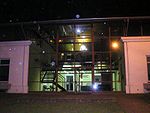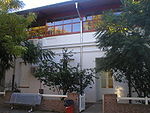
Diego Portales University is one of the first private universities founded in Chile and is named after the Chilean statesman Diego Portales.

The University of Buenos Aires is a public research university in Buenos Aires, Argentina. It was established in 1821. It has educated 17 Argentine presidents, produced four of the country's five Nobel Prize laureates, and is responsible for approximately 40% of the country's research output.

The Torcuato Di Tella University is a non-profit private university in Buenos Aires, Argentina. Founded in 1991, the university focused primarily on social sciences.

The National University of Colombia is a national public research university in Colombia, with general campuses in Bogotá, Medellín, Manizales and Palmira, and satellite campuses in Leticia, San Andrés, Arauca, Tumaco, and La Paz, Cesar. Established in 1867 by an act of the Congress of Colombia, it is one of the largest universities in the country, with more than 53,000 students. The university grants academic degrees and offers 450 academic programmes, including 95 undergraduate degrees, 83 academic specializations, 40 medical specialties, 167 master's degrees, and 65 doctorates. Approximately 44,000 students are enrolled for an undergraduate degree and 8,000 for a postgraduate degree. It is also one of the few universities that employs postdoctorate fellows in the country.

Universidad de las Américas Puebla, commonly known as UDLAP, is a Mexican private university located in San Andrés Cholula, near Puebla. The university is known for its programs in Finance, Arts and Humanities, Social sciences, Science and Engineering, and Business and Economics. It is considered to be one of the most prestigious universities in Latin America, having been ranked the best private and single-campus university in Mexico by the newspaper El Universal, as well as being one of the only seven universities in Latin America accredited by the Southern Association of Colleges and Schools. The UDLAP has also been very successful in Mexican collegiate sports; their teams are the Aztecas.

The National Agrarian University, also formally called National Agrarian University – La Molina (UNALM), is a public university in Lima, Peru. Of particular renown in the fields of agricultural, biological, and forestry sciences, it is also the only university in Peru offering degrees in meteorology. The university is organized into eight faculties which contain twelve academic departments. It is considered one of the most important higher education institutions of Peru.

The National Technological University is a country-wide national university in Argentina, and considered to be among the top engineering schools in the country. Hosting over 85,000 students, its student body is comparable to Argentina's third-largest university and exceeded significantly only by the University of Buenos Aires (UBA). It has 29 semi-independent branches of various sizes located all over the country.

The University of Sonora is a public university in the northwestern state of Sonora, Mexico that has a strong research program. The university was founded in 1942 and is considered the main cultural and educational driver in the state. The university motto is "El saber de mis hijos hará mi grandeza". It is the largest university of Sonora with about 30,000 students distributed in five campuses.
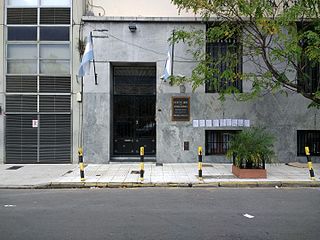
The Instituto Libre de Segunda Enseñanza is a high school that depends on the Universidad de Buenos Aires (UBA). It has approximately 1000 students, and it is located in Libertad 555 street, Capital Federal, Buenos Aires, Argentina. As it is affiliated with the University, it has an admission process that lasts one year and consists of an admission course, which involves multiple exams in Mathematics, History, Language and Geography. Almost all of its faculty teaches in the UBA, and physical education used to be performed at the Universidad de Buenos Aires campus, in Ciudad Universitaria, until 2016. One of its characteristics is that there is no need to do the CBC, because it offers its students the possibility of attending an extra 6th year in the career they have chosen.
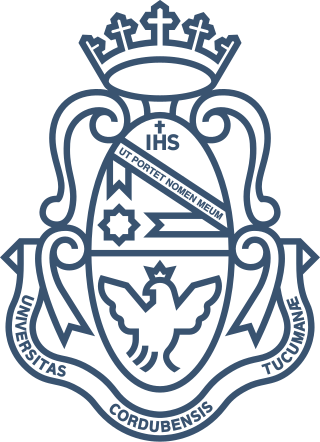
The National University of Córdoba, is a public university located in the city of Córdoba, Argentina. Founded in 1613, the university is the oldest in Argentina, the third oldest university of the Americas, with the first university being the National University of San Marcos and the second one, Saint Thomas Aquinas University.

The National University of San Juan is a public university in Argentina. Its seat is located in the city of San Juan, capital of the province of the same name, in the Cuyo region. It was founded in 1973, based on several local institutions and a faculty of the National University of Cuyo.

The National University of the Northeast is an Argentine national university. It is located in the cities of Corrientes and Resistencia, capital cities of the Provinces of Corrientes and Chaco respectively, and was established on December 4, 1956. Known as the University of the Sun, it was the seventh-largest university in Argentina by student enrollment numbers as of 2017.

The National University of General San Martín is an Argentine public university whose main campus is located in the city of San Martín, Buenos Aires Province.
The National University of La Matanza is an Argentine national university situated in La Matanza Partido, Buenos Aires Province.

The National University of Lomas de Zamora is an Argentine state national university located in Lomas de Zamora, Buenos Aires Province. Maintaining extensive research facilities, and with over 30,000 students, UNLZ is one of the most important universities of the Greater Buenos Aires area.

The National University of Tres de Febrero is an Argentine national university.
The University of San Andrés is a private university located in Victoria, Buenos Aires, Argentina on the shores of the Rio de la Plata, in the metropolitan area of Greater Buenos Aires. It is a small institution, with approximately 900 undergraduate students and 500 graduate students.
The University of CEMA is a private university in Buenos Aires, Argentina. It was founded by Carlos Rodríguez, along with Roque Fernández and Pedro Pou, as the Center for Macroeconomic Studies of Argentina (CEMA) University Institute in 1995, a pioneer in higher education programs in the areas of economics, politics, management, and finance in Argentina.
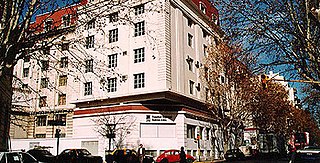
The National Technological University, Buenos Aires, also called UTN-FRBA or UTN.BA, is the Buenos Aires–based regional faculty of the National Technological University.

The School of Languages (FADEL) is one of the 17 schools that constitute the National University of Comahue in Argentina. It is located in General Roca, province of Río Negro (Mendoza and Perú). It has 800 students, but with the Department of Foreign Languages for Specific Purposes (DIEPE), located in the city of Neuquén, it provides services to the over 35,000 active students attending its courses in any of the 76 undergraduate and postgraduate programs offered in the different academic units in the provinces of Río Negro and Neuquén.


